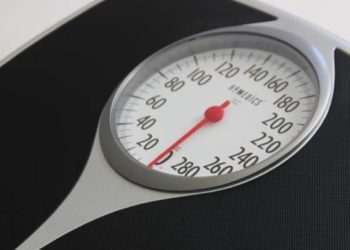Diffusion kurtosis imaging useful in assessment of HbA1c levels
1. In patients with suspected pancreatic disease, diffusion kurtosis imaging of the pancreas may be used to predict hemoglobin A1c values.
2. Following pancreatic diffusion kurtosis infusion, mean kurtosis values were positively correlated with HbA1c values, suggesting MK measurement may be a potential marker of HbA1c levels or the histopathological changes secondary to elevated HbA1c levels.
Evidence Rating Level: 2 (Good)
Study Rundown: Routinely measured in diabetic patients, Hemoglobin A1c (HbA1c) values are an effective measure of average glycemic control due to dose-dependent binding of glucose to the A1c component of hemoglobin. As prior studies have shown that magnetic resonance imaging (MRI) of the pancreas may be a useful adjunct in prognostication of late complications of diabetes by revealing pancreatic amyloid deposition, the present study sought to determine if diffusion kurtosis imaging (DKI) may be used to predict HbA1c levels. DKI is an extension of the diffusion-weighted imaging method, which focuses on water diffusion deviation (or kurtosis) to describe tissue structure. This method evaluates the degree to which water diffusion deviates from standard Gaussian behavior to provide a more nuanced characterization of tissue under study, revealing microstructural derangements which may be related to elevated HbA1c levels. Patients with suspected pancreatic disease were divided into three groups by clustering of HbA1c values, to which mean kurtosis (MK) values were compared following pancreatic MRI with DKI. MK values were found to be positively correlated with HbA1c, suggesting that DKI may accurately predict HbA1c values, or be representative of pathological changes in the pancreatic tissue secondary to chronically elevated HbA1c levels. This study was limited in that it excluded patients with secondary diabetes (such as that caused by pancreatic cancer or pancreatitis), it did not control its findings to histopathological samples, and it utilized a relatively small sample size. Future trials should examine the clinical applicability of this technique in diagnosis or prognostication of diabetic patients. Additionally, the resolution of DKI is still considered limited and further development and optimization of DKI technique would be expected to improve its performance.
Click to read the study in the Journal of Magnetic Resonance Imaging
Relevant Reading: Diffusional kurtosis imaging: the quantification of non-Gaussian water diffusion by means of magnetic resonance imaging
In-Depth [prospective cohort]: A total of 102 consecutive patients were enrolled, all of whom had suspected pancreatic disease, but those with known diabetes secondary to structural diseases such as pancreatitis or pancreatic adenocarcinoma were excluded. The patients were stratified into 3 groups based on criteria established by the American Diabetes Association: HbA1c < 5.7% (group 1), 5.7% ≤ HbA1c < 6.5% (group 2), and HbA1c ≥ 6.5% (group 3). Between January 2012 and December 2012, data from MRI with DKI were collected using a 3-T MR system and a 6-channel array coil. Imaging data were interpreted by two independent radiologists who were blinded to clinical diagnostic information for each subject. Results from the pancreatic imaging studies such as MK and apparent diffusion coefficient were then compared with HbA1c values. A positive correlation was found between mean DK and HbA1c values (r = 0.66, p < 0.0001). The correlation between MK and HbA1c was most significant in the group with the highest HbA1c (group 3; p < 0.05). The sensitivity, specificity, and area under the ROC curve of the MK for group 3 were 90%, 88%, and 0.92, respectively.
Image: PD
©2015 2 Minute Medicine, Inc. All rights reserved. No works may be reproduced without expressed written consent from 2 Minute Medicine, Inc. Inquire about licensing here. No article should be construed as medical advice and is not intended as such by the authors or by 2 Minute Medicine, Inc.






